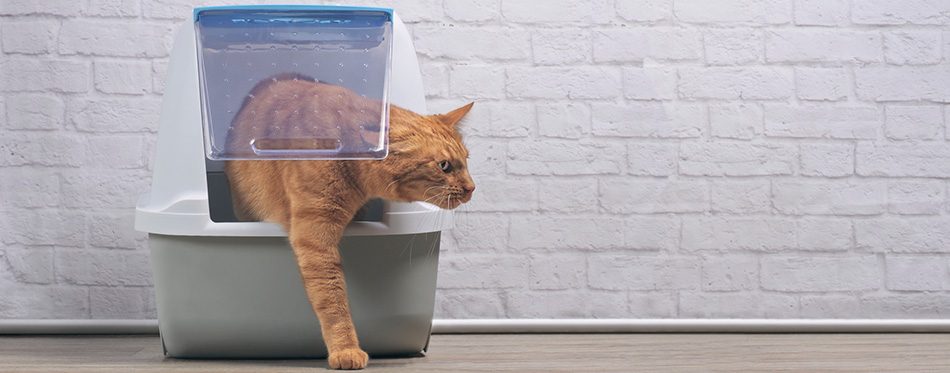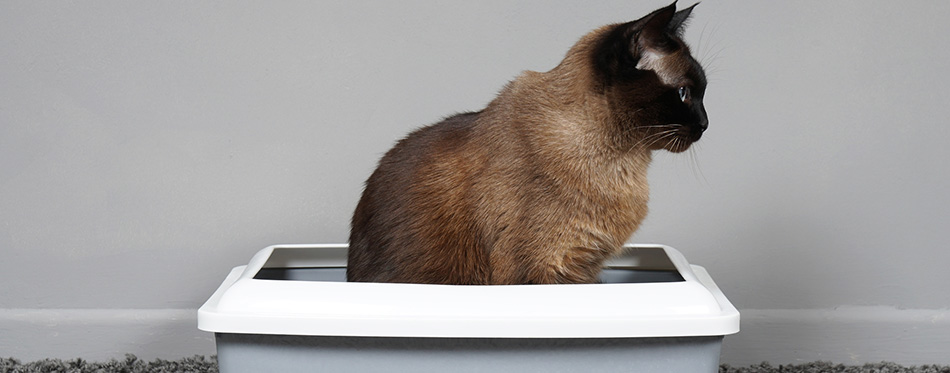How often is best for your cat when it comes to their pooping? We all know that a pet’s toilet habits can be a good indicator of how they are feeling and whether there are any potential health issues that need to be checked out. But to avoid becoming an over-anxious fur-baby parent, it’s wise to know how much, how often and what is normal when it comes to the contents of your cat’s litter tray. We ask the question – ‘how often should a cat poop?’ and consider what you should be happy with when it comes to your feline’s toilet time and when it’s time to have a chat with your vet.
What is Normal?
No two kits are exactly the same and that also applies to the timings of their bodily functions but as a general guide, a healthy cat should be passing a bowel movement at least once a day. But it is not just the frequency of their poop that counts but also the quality. Healthy cat poop should be dark brown in color and be well-formed, so not too hard or broken up but not too soft or mushy. All poop smells but it shouldn’t smell too foul or have any odd odors. Observing what is ‘normal’ for your own cat can really help you to recognize when there could be a pooping issue as well as knowing if your cat is not pooping but acting normal. We are not asking you to get too up close and personal with your cat’s poop, but spending a little time noting how often your cat uses their litter tray each day and what their ‘normal’ poop looks and smells like can give you a head start when understanding your pet’s pooping health.

Factors Affecting How Often your Cat Poops
Not all pooping issues indicate an underlying health concern as there are everyday factors that can influence or affect how often they need to use their litter tray. These factors include:
Their age: The life stage of your pet is going to influence the frequency of their poop, so a healthy adult cat is typically going to defecate around once a day. However, when it comes to how often do kittens poop, younger cats are more of a pooping monster and will be going to the toilet several times a day.
Activity levels: Their daily rate of exercise and activity has the potential to affect your cat’s pooping frequency, leading to less defecation over a typical day. The reason for inactivity influencing a cat’s poop rate is linked to their digestive motility – or the speed at which waste products pass through their system. Regular exercise directly contributes to healthy motility, meaning waste steadily moves through the digestion so your cat can do their daily poop. A less active or sedentary cat will most likely have a digestive motility to match meaning it will be sluggish and slow, reducing the rate they poop and potentially leading to a bout of cat constipation. The good thing about the relation between activity and motility is that it can be improved, simply by ensuring your cat gets off the sofa and moves more each day, even if it is just a fun play session with his favorite human.
Their diet: If your kit’s pooping seems to be off kilter, their diet could well be to blame. Cats are carnivores and like to eat a quality protein-based diet so if her cat food is bulked up with fillers or carbs it could be the reason why she is a little more ‘bunged up’ and struggling to poop. Likewise, food that is too rich or not as fresh as it could be, may well be upsetting her tum and upping the rate she needs to go. Lack of fresh clean water can also lead to dehydration in your cat and cause a change in their bowel habits. Also, be careful if you are planning on changing your cat’s food or diet as sudden changes to what they eat can upset their digestion so if you are moving your kit onto another type or brand of cat food, make the change gradually to avoid triggering a bowel habit change.
Medical conditions: Some medical conditions can also affect your cat’s bowel habits and how often they need to poop. Hairballs, bowel blockages, inflammatory bowel disease, parasitic overload, hyperthyroidism and arthritis are all medical issues that are known to potentially have an impact on your cat’s toilet habits, which can also be influenced by any medication your pet may be on. Another medical reason for less or more frequent poop trips can be obesity, as overweight kits are more susceptible to constipation.
You may also like our articles on Cat Litter and Self-Cleaning Litter Boxes.
What to Look Out for
Anything that is not ‘normal’ for your cat when it comes to their litter tray needs further monitoring and possible investigation by your vet. But diarrhea and constipation are the two main reasons your cat is pooping more or less than they normally do.
- Diarrhea
Diarrhea is characterized by loose or watery stools, typically following an urgent need for your cat to go to the toilet and is not uncommon in felines. It is often just a single bout but can last longer. One to two days of diarrhea shouldn’t cause any problems for your cat unless they are a kitten or an aging senior but if it lasts longer than 48 hours, your kit can become dehydrated. Diarrhea in cats is most often caused by:
- Food allergies or intolerances
- Sudden changes to their diet
- Inflammatory bowel conditions
- Worms or parasites
- Bacterial infections
Keeping your cat sufficiently hydrated during a bout of diarrhea and removing any food or dairy products you suspect could be upsetting their tum can help their digestion to quickly settle back to a normal pattern. However, diarrhea can sometimes be caused by certain cancers, pancreatic issues or hyperthyroidism so if it is prolonged or accompanied by other symptoms such as vomiting, blood in their stools, lethargy or pain, do consult your vet.
- Constipation
Cat constipation is not pleasant for your pet and means his digestive system has gone on a total slowdown meaning pooping becomes much more of a physical chore. When a cat is constipated you will note he is straining a lot at the litter tray but producing none or very little poop for his efforts. Occasional constipation is pretty normal and should quickly resolve itself but if your feline is frequently constipated, further investigation with a vet is a good idea.
There are numerous reasons why your cat can suffer from constipation, including:
- A dry diet or lack of water
- Hairballs blocking the digestive tract
- Problems with his kidneys
- Not enough fiber in their diet
- A narrowed colon or blockage
Increased exercise, more fresh water, adding fiber to their diet and perhaps reviewing their regular food and swapping for a wet rather than dry kibble diet can all help to get things moving again for your constipated cat. You may also like our article on cat food for constipation.

What you Can do to Help
If you notice a change in the frequency of your cat’s ‘normal’ pooping routine, there are a few simple things you can do to hopefully get their digestion back on track.
- Ensure they have access to plenty of fresh, clean water to keep your cat sufficiently hydrated
- If they appear to be constipated, up their activity levels, even if it’s more playtime at home to help get things moving
- Avoid giving your cat dairy products such as milk or yogurt as they can struggle to digest them properly, leading to looser, more frequent stools
- Introduce any changes to their normal diet gradually – ideally over several days, mixed with decreasing amounts of their old food – to give their system time to adjust to their new meal
- Ensure your cat is fully up to date with their vaccinations and their worming program is sufficient
- Make sure your cat is a healthy weight and take steps to manage it if you think they have packed on a few too many pounds.
Related Post: Cat Litter Box
When to See the Vet
Temporary changes in how often your cat needs to poop are not uncommon and in most cases should not be a cause for any concern as your kit will usually return to what is normal for them. But as a pet owner, it is always better to be safe than sorry so a good rule of thumb to follow is to make an appointment with your vet for a check-up if their bowel movements remain upset after a couple of days.
But there are exceptions to the rule and there are some indicators you need to urgently act upon, including blood in their stools, vomiting, and lethargy or if your cat is also straining and struggling to urinate. All of these ‘red flag’ symptoms could indicate something more serious is going on and needs further veterinary investigation, pronto. Your vet can run a series of blood tests to rule out anything more sinister and if all is clear, can give you more guidance and advice on how to help your furry feline friend be happy and regular when it comes to their pooping life.

